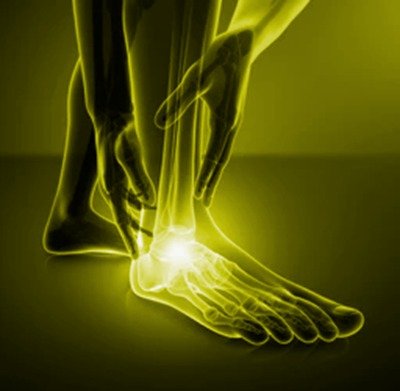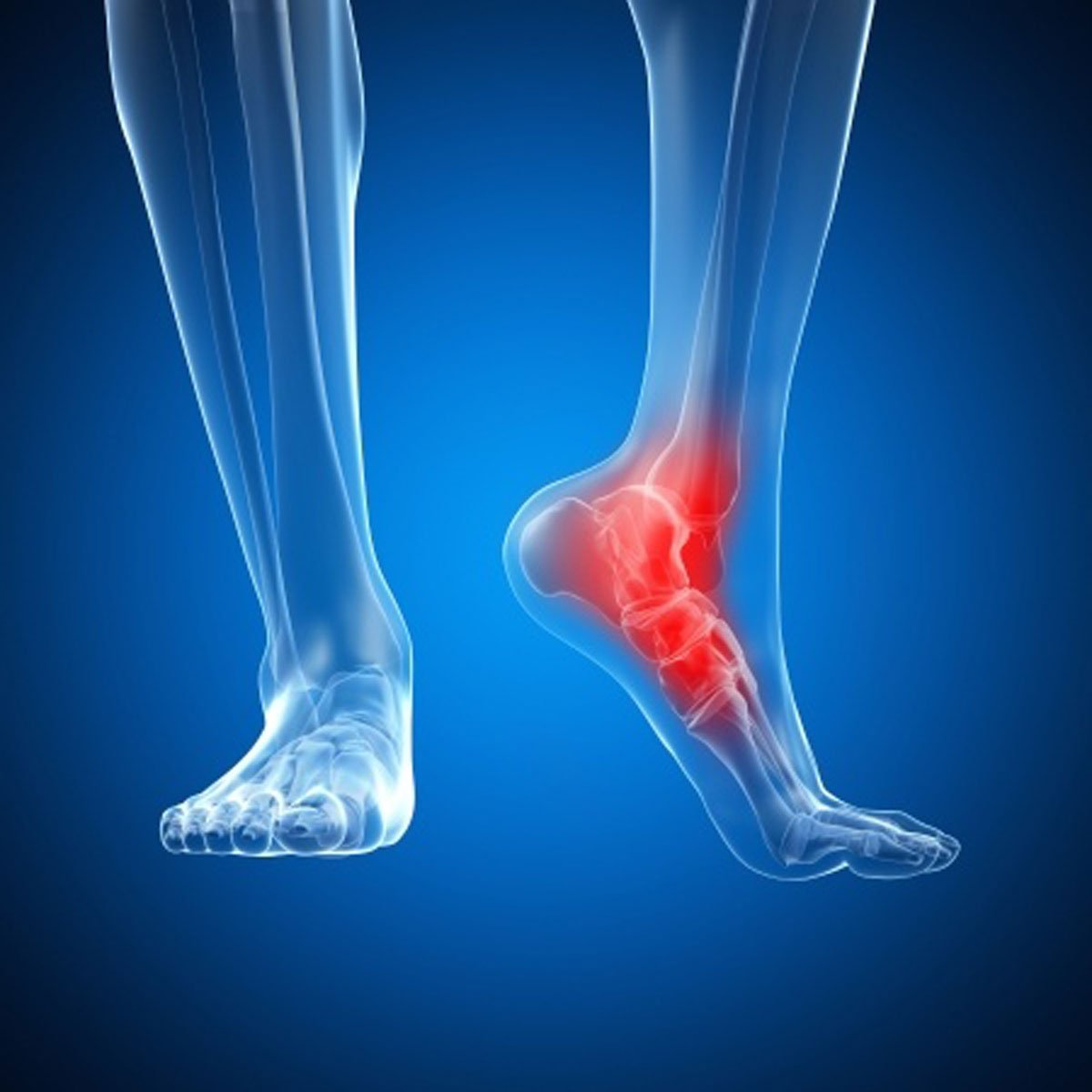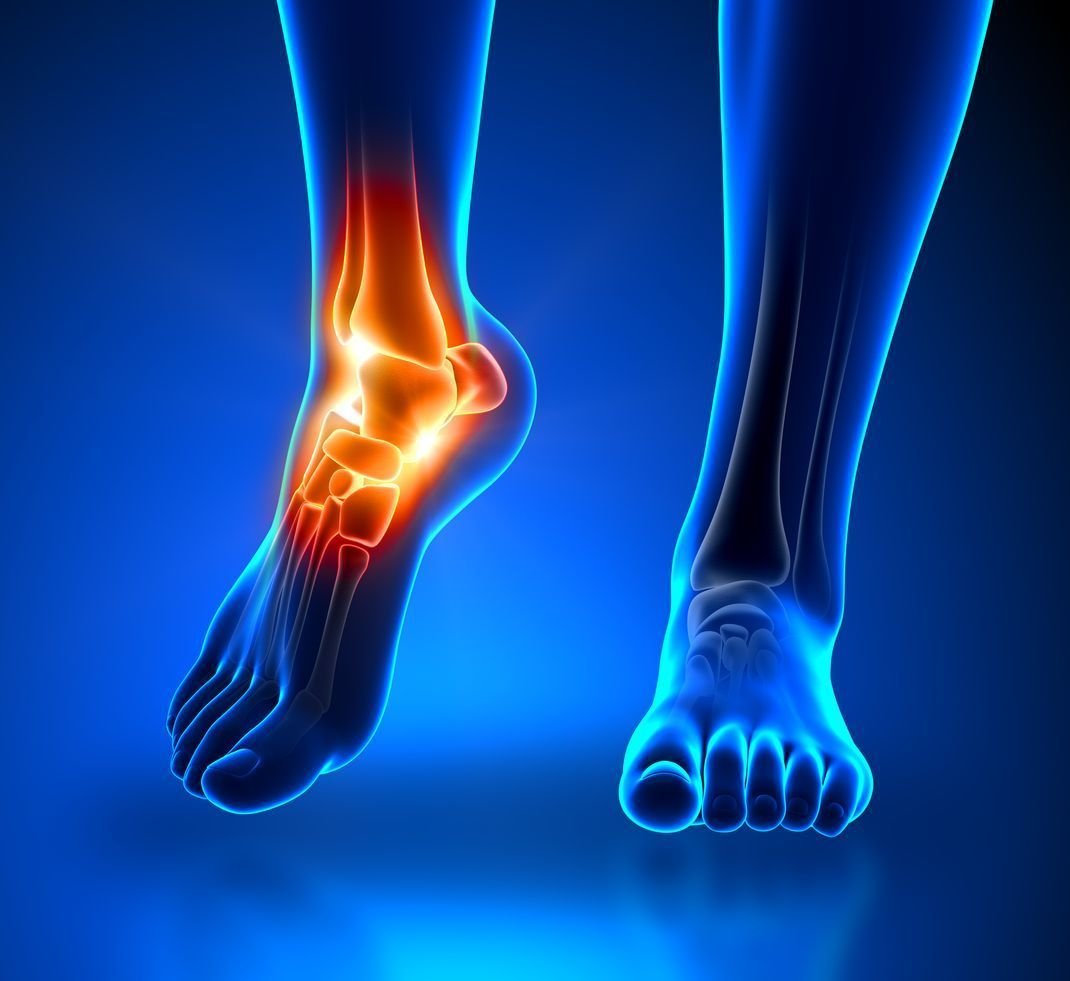Mitigate Pain Clinic – Dr Jeshnu Tople – Pain Management Specialist In Nagpur
Foot & Ankle Pain
Ankle Pain and Foot Pain
Common Symptoms of Ankle and Foot Pain
- Dull aching pain in the ankle, heel, or arch
- Sharp stabbing pain
- Swelling around the joint
- Difficulty walking or putting weight on the foot
- Numbness, tingling, or burning sensations
- Stiffness or limited range of motion
- Instability in the ankle joint

Common Symptoms of Ankle and Foot Pain
1. ATFL Sprain
An Anterior Talofibular Ligament (ATFL) sprain is one of the most common injuries to the ankle. It occurs when the ligament that stabilizes the outer part of the ankle is overstretched or torn, often as a result of rolling the ankle or twisting it awkwardly. This type of sprain is common in athletes and those who frequently participate in physical activities that involve quick direction changes.
Causes of ATFL Sprain:
- Twisting or rolling the ankle during sports or physical activity
- Walking or running on uneven surfaces
- Sudden changes in direction or improper landing from a jump
2. Deltoid Ligament Sprain
A Deltoid ligament sprain affects the inner side of the ankle and occurs when the strong deltoid ligament is overstretched or torn. This type of sprain is less common than lateral ankle sprains but can result from severe ankle trauma or eversion (turning the foot outward).
Causes of Deltoid Ligament Sprain:
- Sudden, forceful eversion of the foot
- Direct trauma or impact to the inner ankle
- Sports injuries or falls
3. Peroneus Tendinitis
Peroneus tendinitis refers to the inflammation of the peroneal tendons, which run along the outside of the ankle and foot. This condition is caused by overuse or repetitive stress on the tendons, resulting in pain and swelling in the outer ankle and foot.
Causes of Peroneus Tendinitis:
- Overuse from running or prolonged walking
- Improper footwear or lack of arch support
- Repetitive ankle movements, such as twisting or turning
4. Achilles Tendinitis
Achilles tendinitis is a common overuse injury affecting the Achilles tendon, which connects the calf muscles to the heel bone. This condition causes pain and stiffness at the back of the ankle and can worsen with physical activity or improper stretching.
Causes of Achilles Tendinitis:
- Overuse from running or jumping
- Tight calf muscles or inadequate stretching
- A sudden increase in activity levels
5. Plantar Fasciitis
Plantar fasciitis is a condition that causes pain in the heel and arch of the foot due to inflammation of the plantar fascia, a thick band of tissue that runs along the bottom of the foot. This condition is often caused by overuse or stress on the foot, especially from activities that involve prolonged standing or walking.
Causes of Plantar Fasciitis:
- Overuse from running, standing, or walking
- Wearing unsupportive footwear
- Flat feet or high arches
6. Arthritis
Arthritis in the ankle or foot can lead to chronic pain, swelling, and stiffness. Both osteoarthritis and inflammatory arthritis can affect the joints, causing discomfort and reduced mobility.
Causes of Arthritis:
- Age-related wear and tear (osteoarthritis)
- Autoimmune disorders (rheumatoid arthritis)
- Previous joint injuries or fractures
7. Flat Feet (Fallen Arches)
Flat feet occur when the arch of the foot collapses, causing the entire sole to make contact with the ground. This condition can lead to pain in the foot, ankle, knees, and even hips due to improper alignment and increased stress on joints.
Causes of Flat Feet:
- Genetics
- Weak or damaged tendons
- Injury or aging
8. Tarsal Tunnel Syndrome
Tarsal Tunnel Syndrome occurs when the posterior tibial nerve is compressed as it passes through the tarsal tunnel, located near the ankle. This compression can cause pain, numbness, and tingling in the foot, and symptoms may worsen with physical activity.
Causes of Tarsal Tunnel Syndrome:
- Inflammation or swelling from an ankle injury
- Flat feet or foot deformities
- Conditions like diabetes


Risk Factors for Ankle and Foot Pain
Several factors can increase your risk of developing ankle or foot pain, including:
1. Overuse: Repetitive activities like running, walking, or standing for long periods can lead to overuse injuries in the foot and ankle.
2. Improper Footwear: Wearing shoes that don’t provide adequate support can contribute to conditions like plantar fasciitis and tendinitis.
3. Age: As people age, the likelihood of developing arthritis or experiencing degenerative changes in the joints increases.
4. Occupational Risks: Jobs that require long hours of standing, walking, or heavy lifting can put strain on the feet and ankles, leading to chronic pain.
Non-Surgical Treatment Options for Ankle and Foot Pain
At Mitigate Pain Clinic, we offer non-surgical solutions tailored to the cause of your pain. These include:
1. Medications
Various medications like NSAIDs, opioids and co-analgesics can be useful for the patients with ankle pain and foot pain.
2. Physical Therapy
A customized exercise program for stretching and strengthening of the muscles, ligaments and tendons around the ankle and foot can be necessary to improve flexibility and reduce pain.
3. Custom Orthotics
Shoe inserts or braces designed to provide extra support and relieve pressure on painful areas of the foot and ankle are required sometimes
4. Interventional Pain Treatments
Advanced treatments, including nerve blocks, hydrodissection, Platelet-Rich Plasma (PRP) therapy, Growth Factor Concentrate (GFC) therapy and Radiofrequency Ablation (RFA), provide targeted pain relief and promote healing.
How to Prevent Ankle and Foot Pain
To prevent ankle and foot pain:
- Wear Proper Footwear: Choose shoes with adequate support and cushioning.
- Exercise Regularly: Strengthening and stretching exercises for ankles and feet can prevent injuries.
- Maintain a Healthy Weight: Reducing excess weight can relieve pressure on joints and lower your risk of developing pain.
When to See a Specialist for Ankle and Foot Pain
See a specialist if:
- Pain persists or worsens
- You experience swelling or bruising
- You have difficulty bearing weight or moving your ankle or foot
Conclusion
FAQs About Ankle and Foot Pain and Non-Surgical Treatments
Our Treatments
- Joint Pain
- Back Pain
- Sciatica Pain
- Neck Pain
- Hand Pain
- Shoulder Pain
- Foot & Ankle Pain
- Limb Pain
- CRPS Pain
- Cancer Pain
- Headache
- Hyperhidrosis
- Herpes Zoster Pain
- Chronic Pelvic Pain
- Scar Tenderness
- Postherpetic Neuralgia
- Trigeminal Neuralgia
- Peripheral Neuralgia
- Chronic Vascular Pain
- Generalised Body Pain
- Chronic Injury Pain
- Failed Back Surgery Syndrome
- Chronic Post Surgical Pain
- Other Painful Conditions
- Slipped DISC / PIVD